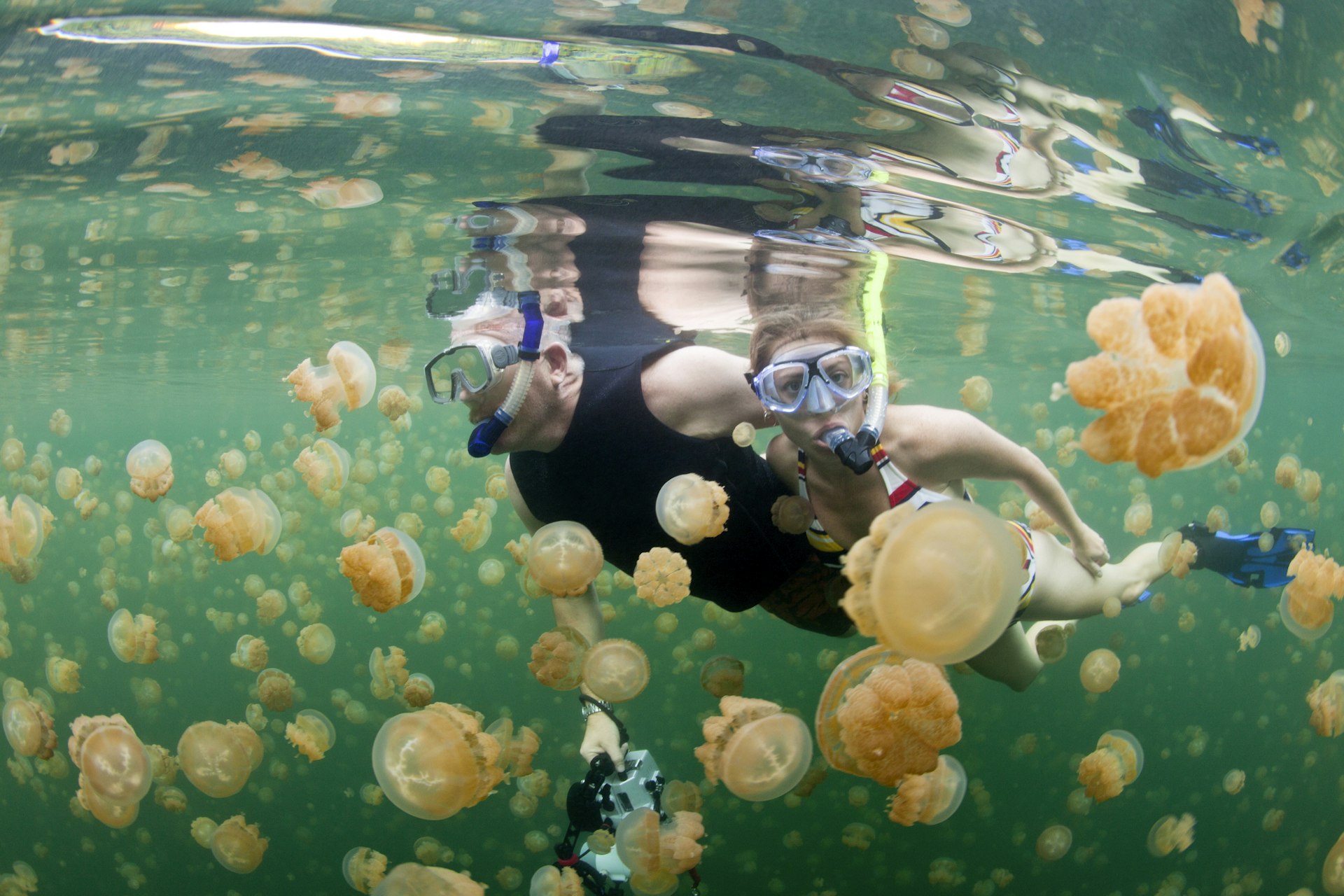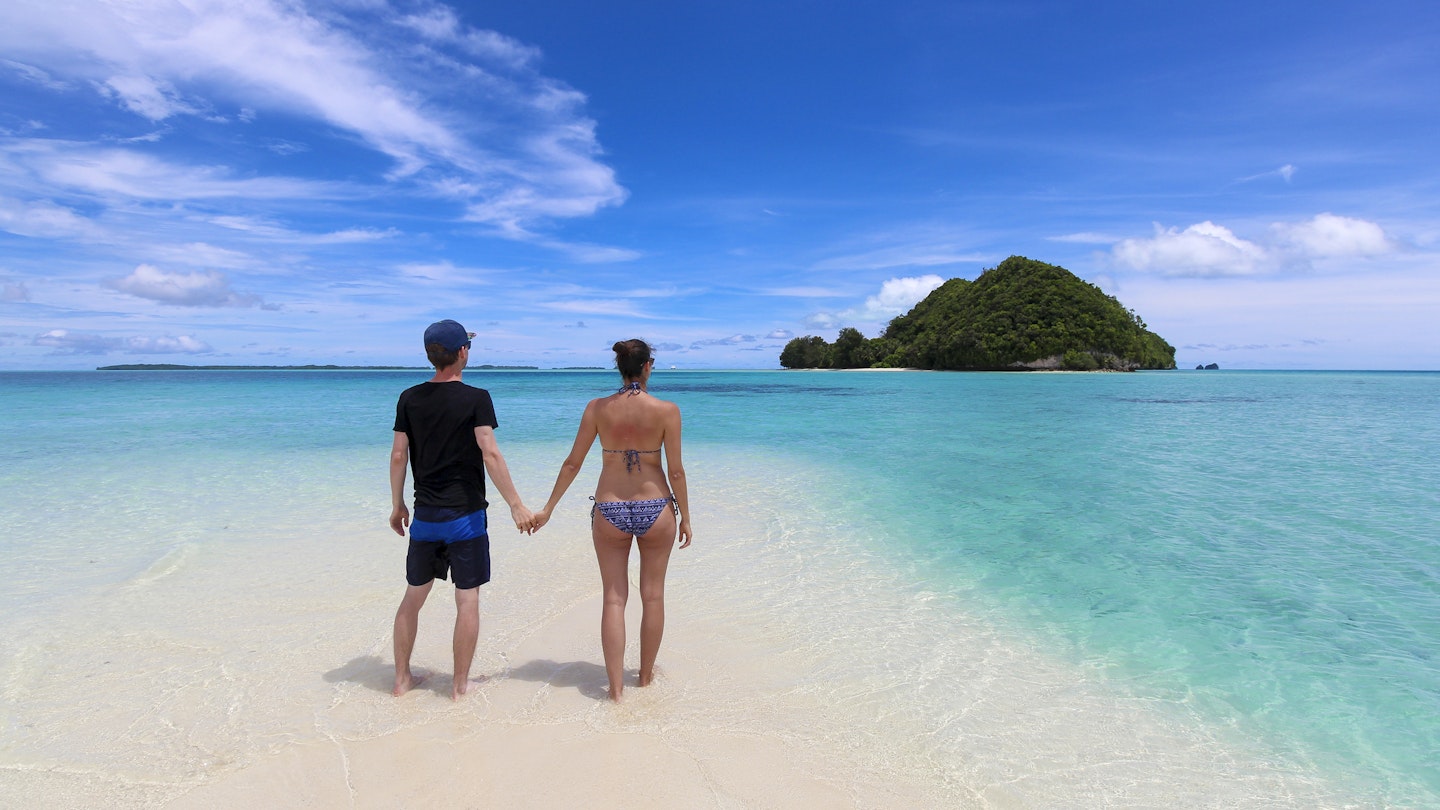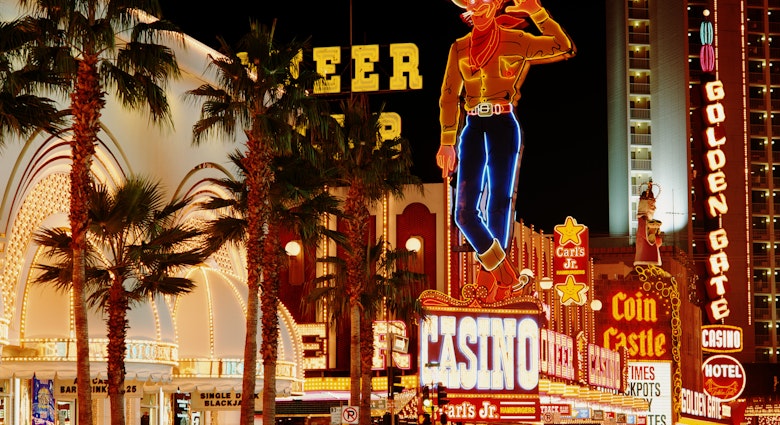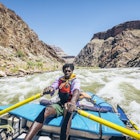A string of 340 coral and volcanic islands spread against the deep blue waters of the western Pacific, Palau is a picture postcard of paradise.
Given that only 90,000 tourists visited the country in 2019 – and in the years since considerably less – this is the kind of country to live out your scuba diving dreams or Robinson Crusoe fantasies on uninhabited tropical beaches.
From unique marine life encounters to towering waterfalls and WWII ruins there's plenty here to pique the interest of visitors and, outside of the handful of beach resorts that draw large numbers of Chinese visitors on national holidays, you'll have much of the country all to yourself to explore.
When should I go to Palau?
Palau's best season is the dry period from December to April. With the ideal weather for water sports and visiting the country's many islands, this is of course also the peak tourism season and so prices are higher – particularly during the New Year holidays (both Western and Chinese).
While the wet season from May to November presents more challenges for tourism, visiting is possible throughout the year as the country does not experience typhoons.
How long do I need in Palau?
If you're visiting Palau as part of a longer island-hopping itinerary, two to three days is enough to hit the highlights. Visit Koror's handful of museums upon arrival to get to know the culture and history, spend the next day on a boat trip to the Rock Islands, and finish up with a day hike to 217m-high Ngardmau Waterfall – the tallest in Micronesia.
With more time, opt for several days of diving (leaving a one-day surface interval before hopping back onto a flight) or take the public ferry down to Peleliu to explore the island's jungle-ruin WWII sites and a handful of idyllic empty beaches. If time and money are no limit, hire a private boat charter to Kayangel Atoll or the remote Southwest Islands.

Is it easy to get in and around Palau?
Unless you're captaining your own boat or have caught a lucky ride with a friend who is, expect your first impression of Palau to be an endless blue panorama from the window of an airplane – the cheapest way to get to Palau if a yacht charter isn't in the cards. Koror's Palau International Airport (ROR) is connected by direct flights from Seoul, Brisbane, Taipei, and a number of nearby Pacific island nations, including the famous United Island Hopper flight from Honolulu to Guam with stops along the way in the Marshall Islands and the Federated States of Micronesia.
Palau's largest city at 11,000 residents (that's more than half of Palau's population of just over 21,000, mind you), Koror's handful of bus routes are the only public road transportation in the country. Additionally, state-run ferries travel between Koror and the southern islands of Peleliu and Angaur. Everywhere else, charter or group trips are your only regular options – though popular destinations like the Rock Islands see daily group departures from multiple local operators.
Top things to do in Palau
No first-timer's guide to Palau would be complete without a mention of the country's commitment to conservation: Palau declared its water the world's first shark sanctuary in 2009, and implemented a Palau Pledge in 2017 to commit visitors to the cause of conservation as well.
Nearly every point of interest that brings visitors to Palau is built on the nation's incredible diversity of flora and fauna, particularly under the Pacific Ocean waves. More than 500 coral species, 17 thriving species of shark, and at least 1300 species of reef fish can be found here, along with 95% of Micronesian fish species.
Most travelers explore on snorkeling and scuba day trips using Koror as a base, often to the Rock Islands but sometimes just off the shores of Koror itself. The most iconic visitor experience in Palau is a quick swim in Jellyfish Lake with up to seven million stingless Golden Jellyfish – one of several such small lakes across the Rock Islands in which a lack of natural predators and significant oceanic inflow has led to native jelly populations losing their natural defenses.
While nearly all of Palau's 340 islands showcase pristine beaches and healthy coral just begging for a swim, a few are also home to significant historic sites dating to the Japanese occupation in WWII. Chief amongst these for history buffs is Peleliu; just a few hours by ferry from Koror opens the way to exploring abandoned Japanese command outposts and defensive structures, and the shells of American and Japanese tanks whose battles led to the liberation of the islands at the end of the war. Most of it is now slowly being absorbed into the encroaching jungle in a losing battle against the ravages of time and nature.

My favorite thing to do in Palau
The Rock Islands are the highlight of Palau for most visitors. Snorkeling and scuba diving among the several hundred limestone islands showcase the colorful marine life, as does a swim in Jellyfish Lake. Rather than heading out for a day, aim to spend a few nights. With dive centers running daily boats from Koror to the Rock Islands, it's typically possible to arrange a drop-off and pick-up somewhere on the islands.
With a kayak and a stash of food and fresh water, it's hard to beat paddling between uninhabited islands or through hidden coves by day, and camping beneath the palm trees and starry skies by night. Given the popularity of tourism among the islands it's rare that you'll ever go a full day without seeing a snorkeling tour or coming across an anchored yacht somewhere, but most of the time there's just the backdrop of crashing waves and your paddle cutting through the surf.
How much money do I need for Palau?
As one might expect from a remote island nation, prices are high compared to nearby regions such as Southeast or East Asia. While it may not be expensive to get to Palau from the Philippines, Taiwan, or other nearby countries, expect to pay considerably more for basic tourist necessities upon arrival.
Hostels basically don't exist on the islands – for simple guesthouses and hotel rooms expect to pay $60–100 per night, for midrange places around $100–200, and for top-end hotels or beach resorts even more. Food, on the other hand, is fairly good value considering the country's remote location. Self-catering is not notably more expensive than in destinations like the USA, and restaurants are also about the same or – particularly for fresh seafood – cheaper than in the USA or Western European countries.
Diving in Palau is also not inexpensive; anticipate at least $200 for two-dive trips through tour operators, though significant package discounts are often available for travelers who will stay in operator-run accommodation or who will be visiting for longer periods.
What currency is used in Palau?
Palau uses the US Dollar as its official currency.

What is the Palau Pledge?
Palau's immigration laws formally recognize conservation, and arriving visitors are required to pledge their intention to protect the country's nature:
“Children of Palau, I take this pledge, as your guest, to preserve and protect your beautiful and unique island home. I vow to tread lightly, act kindly and explore mindfully. I shall not take what is not given. I shall not harm what does not harm me. The only footprints I shall leave are those that will wash away.”
Is sunscreen really banned in Palau?
While sunscreen is not banned per se, ten chemicals that are toxic to coral reefs and present in some sunscreens were banned in 2020. Thus, sunscreens that contain these chemicals are indeed banned for purchase or import in Palau. If in doubt, look for products that advertise themselves as “reef bill compliant” on their packaging.











